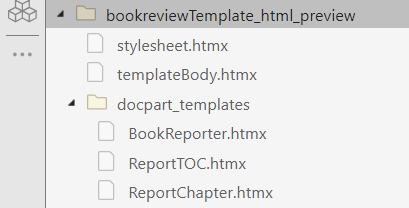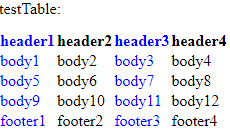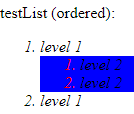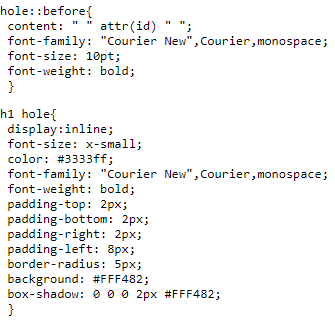模板内容和样式预览结构
要预览模板中的内容和样式,您可以使用函数 tmplview。tmplview 根据模板主体、文档部分和样式表的内容创建一组文档。默认情况下,tmplview 显示生成的主体文档。
文件输出结构
tmplview 根据模板的名称和类型以 "templateName_templateType_preview" 格式在目录中生成文件。例如,名称为 "myTemplate" 的 PDF 模板具有目录名称 "myTemplate_PDF_preview"。tmplview 在该目录中生成以下文档:
templateBody- 包含主模板主体内容的文档stylesheet- 包含模板样式表中样式的文档
该函数还生成一个名为 "docpart_templates" 的子目录,其中包含演示每个模板文档部分内容的文档。例如在创建和预览模板中创建的 HTML 模板中,有三个模板文档部分:BookReporter、ReportTOC 和 ReportChapter。在子目录 "docpart_templates"、tmplview 中生成:
"BookReporter.htmx"- 包含模板文档部分内容的文档,BookReporter"ReportTOC.htmx"- 包含模板文档部分内容的文档,ReportTOC"ReportChapter.htmx"- 包含模板文档部分ReportChapter内容的文档

空位表示
空位是模板中的占位符,可在生成报告时填充内容。模板主体和模板文档部分中的每个空位都以以下格式的文本表示:
<HOLE: myTemplateHole, TYPE: block>
其中 "myTemplateHole" 是该空位的名称。空位的类型可以是 "block" 或 "inline"。有关空位类型的更多信息,请参阅在 Microsoft Word 模板中添加空位和在 HTML 和 PDF 模板中添加空位。为了准确预览用于填充空位的内容如何显示,tmplview 没有为表示空位的文本添加格式。
样式表现
tmplview 将生成的样式表文档分为以下部分:
文本样式
段落样式
表格样式
列表样式
如果 tmplview 无法将 HTML 或 PDF 模板中的 CSS 样式识别为这些样式之一,则该样式将作为原始 CSS 显示于样式表文档末尾的单独部分中。
文本和段落样式部分
样式表文档将文本和段落样式显示为使用样式格式化的样式名称。例如,名为 "myTextStyle" 的文本样式将文本格式化为粗体并带下划线,显示为 myTextStyle。样式表文档在文本和段落样式部分显示任何链接样式。
对于 HTML 和 PDF 模板,您可以为预格式化元素定义样式。段落样式部分用 Preformatted 标记 "(Preformatted)" 元素。例如,名为 myPreStyle 的预格式化元素的样式显示为 myPreStyle (Preformatted)。
HTML 和 PDF 模板还允许您定义报告元素的默认样式。这些样式使用标记 "(Default <type> style)"。例如,以下样式使文档中的所有段落变为粗体,p {font-weight:bold;} 显示为(默认段落样式)。
表样式部分
表样式部分使用 FormalTable 元素和相同的通用表内容显示每个定义的样式。预览表足够大,可以显示为任意数量的 mlreportgen.dom.TemplateTableStyle 属性指定的格式:HeaderFormats、FooterFormats、FirstColumnFormats、LastColumnFormats、OddColumnFormats、EvenColumnFormats、OddRowFormats、EvenRowFormats、TopLeftEntryFormats、TopRightEntryFormats、BottomLeftEntryFormats 和 BottomRightEntryFormats。

列表样式部分
对于 HTML 和 PDF 模板,样式表文档按以下格式显示列表样式:

列表样式名称根据样式是否与 OrderedList 或 UnorderedList DOM 元素一起使用而附加 (ordered) 或 (unordered)。对于 Microsoft® Word 模板,样式表文档不会做出这种区分,因为无序和有序列表样式均可用于格式化 OrderedList 或 UnorderedList DOM 元素。
其他样式部分
如果 tmplview 无法将 HTML 或 PDF 模板中的 CSS 样式识别为文本、段落、预格式化、表或列表样式,则该样式会出现在样式表文档末尾的 "Other Styles" 部分中。例如,这两个 CSS 样式用于设置空位的格式。

"Other Styles" 部分中的所有样式均显示为原始 CSS。
另请参阅
rptview | mlreportgen.dom.Template | mlreportgen.dom.TemplateDocumentPart